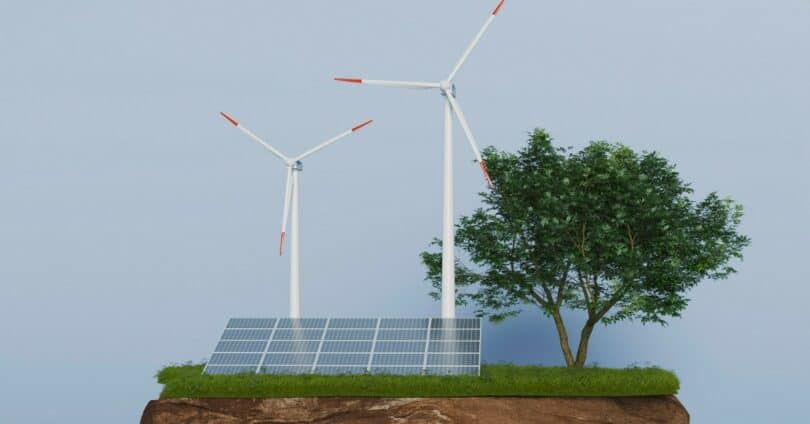The global green power market was valued at $53.09 billion and is expected to grow at a compound annual growth rate of 12.18%.
There has been an increasing emphasis on sustainability and renewable energy sources. The development of green power networks is a critical component of this transformation. It is a system that includes renewable energy sources in the current power grid.
This article examines the pros and cons of investing in a power network. It lights on the potential uses and issues of this approach to energy generation.
Continue reading to learn more about the pros and cons of investing in a green power network.
What Is the Green Power Network?
A subcategory of renewable energy is called “green power.” It stands for the sources of renewable energy that are best for the setting. Green power is defined as electricity generated from renewable energy sources.
It must also go above and beyond what is necessary by mandate or regulation to be considered green power. In other words, green energy is optional or beyond the scope of the legislation. Clients buy green electricity due to its zero-emissions profile and benefits in reducing carbon footprints.
To encourage the adoption and integration of renewable energy into the power grid and is understood in a larger sense. It might be considered a cooperative effort by several stakeholders.
Different Types of Renewable Energy
Depending on the region and the time of year, renewable energy is accessible in ways. Gloomy weather prevents some areas from receiving adequate sunlight despite gale-force winds. Ensure that we have clean, bearable energy by creating a dispersed network from many sources.
The following are seven different kinds of alternative energy sources:
Solar Power
Solar energy is the only renewable energy source that is easy to use at home. All you need to do is buy solar water heaters or solar panels. There are several PV panel kinds, and you may select the ideal one for your house based on factors.
Wind Power
We must erect massive wind turbines in windy regions to bear the advantage of gale-force winds. Rural and distant locations can enjoy having green power thanks to wind farms.
Hydroelectric
Hydroelectric power is quite comparable. Although constructing massive dams and employing turbines may be costly, power will be generated.
Geothermal Power
It is another clean and renewable energy source that may be considered a long-term source of electricity. Some locations can enjoy harnessing the heat within the Earth.
Biomass
Biomass energy is the heat produced by burning organic waste. It is considered a renewable energy source since humans regenerate biological materials, mostly plants.
Tidal Power
Tidal energy, often known as ocean energy, is the hydroelectric energy that tides provide. This energy is sometimes classified as hydropower rather than as a separate category.
Hydrogen
Hydrogen is the most abundant element on our planet, accounting for two-thirds of its total mass. If we can extract this element, it will be possible to utilize it as a zero-carbon fuel.
Pros of Investing in a Green Power Network
There are several benefits to investing in a green power network, which is the application of renewable energy sources. The following are some benefits of funding a green electricity network.
Ecological Advantages
Green power network investments help combat climate change by reducing greenhouse gas emissions. When compared to fossil fuels, which release harmful pollutants into the atmosphere. Renewable energy sources have a lower carbon footprint.
We can lessen the effects of global warming and protect our planet for future generations by switching to a green power network. It lowers the carbon footprint and achieves goals. Energy sources like solar and wind for power generation are based on fossil fuels.
Energy Autonomy and Security
A green power network encourages energy independence. Renewable energy sources are abundant and available. In contrast to fossil fuels, which are subject to price fluctuations and geopolitical tensions.
Countries can lessen their reliance on imports of fossil fuels. It also improves energy security. It can be less susceptible to market volatility by funding a green power network. This technology also increases security and independence.
Yet, it is hard to install and demands a considerable initial expense. Green energy is erratic, which means it is not always accessible. The uses of investing in a green power network energy autonomy and security are worth considering.
Economic Opportunities
The market for renewable energy offers many business options. Local economies are supported, jobs are created, and cash is brought in through assets in green energy networks. Renewable energy projects need skilled labor. It shows extra work options.
The growth of green energy may result from the industry’s expansion. It has creations that boost economic growth and competitiveness.
Long-Term Cost Savings
While the interest in a green power network might be higher than in traditional energy foundations, the drawn-out cost of reserve funds is massive. Since renewable energy is excellent and free, fuel costs are minimal. The price of making renewable energy resumes to drop as technology advances and economies of scale are achieved.
This trend makes it appealing to invest in a green power network. If you want greater possibilities, you may also look into affordable solar. This may be an excellent choice, especially if you have a limited budget.
Enhanced Public Health
Public health is affected when power generation methods like coal and gas pollute the air and water. Cleaner energy sources are promoted by investing in a green power network. It enhances air quality, reduces illnesses, and makes living conditions healthier.
Empowerment of the Community
Investing in a green energy network benefits local communities by allowing them to engage actively in energy generation.
It may be accomplished through community-owned renewable energy projects that provide clean energy while simultaneously providing economic advantages to the community, building a sense of ownership and self-sufficiency.
Cons of Investing in a Green Power Network
There may also be drawbacks or difficulties to take into account. The following are some drawbacks to funding a green electricity network.
High Initial Cost
Creating and managing a green power organization can need effective starting speculations. Renewable energy infrastructure can be costly and take a long time to pay off. Some investors looking for faster returns on their assets may be discouraged by this.
Renewable Energy Intermittency
Renewable energy generation can be intermittent and weather-dependent. This inconsistency complicates matching energy supply with demand. It also necessitates extra costs in energy storage and grid control devices to provide a reliable power supply.
Grid Integration Challenges
It might be tough to integrate renewable energy sources into current power systems. It also adapts variable energy sources, and bidirectional power flows. Green power networks must be upgraded and altered.
Its concerns may result in more large costs and technical problems.
Limits on Land and Resources
Large-scale renewable energy projects often need a lot of land, especially for wind or solar farms. It can result from competition for land and other essential resources.
Potential Effects on Sight and Sound
It can influence the landscape noise and aesthetics. Local communities may object to these effects, which would hinder the adoption and execution of green power projects in society.
Sites for Renewable Energy Need a Lot of Space
We need a lot of room to harness nature’s forces. It will present several issues for renewable energy sites. In contrast to regular power plants, we need more acreage to create renewable energy farms.
Renewable Energy Devices Must Be Recycled
Electricity generated from renewable energy sources emits fewer pollutants. There are issues with renewable devices since their manufacture and disposal processes may cause pollutants. Solar cells will fail to operate well after a while and must be discarded.
Yet, these devices may be harmful. We must devise a recycling method.
Renewable Energy Is Not Always Available
Renewable energy sources are natural forces that are influenced by weather conditions. When the weather is poor, renewable energy technology like solar cells is less useful. When it rains, your PV panels cannot generate electricity, forcing you to rely on traditional power sources.
This unpredictability is the most significant disadvantage of depending on renewable technology.
Understanding the Pros and Cons of Investing in a Green Power Network
A fascinating approach for a person or business to invest in the future and improve our climate is through a green power network. Be aware of the pros and cons of investing in a green power network. To balance the expenses and benefits of this sort of investment, speak with a certified financial counselor.
Make an informed choice now by using the existing green energy options that are accessible.
Did you find this article helpful? Check out the rest of our website for more!









